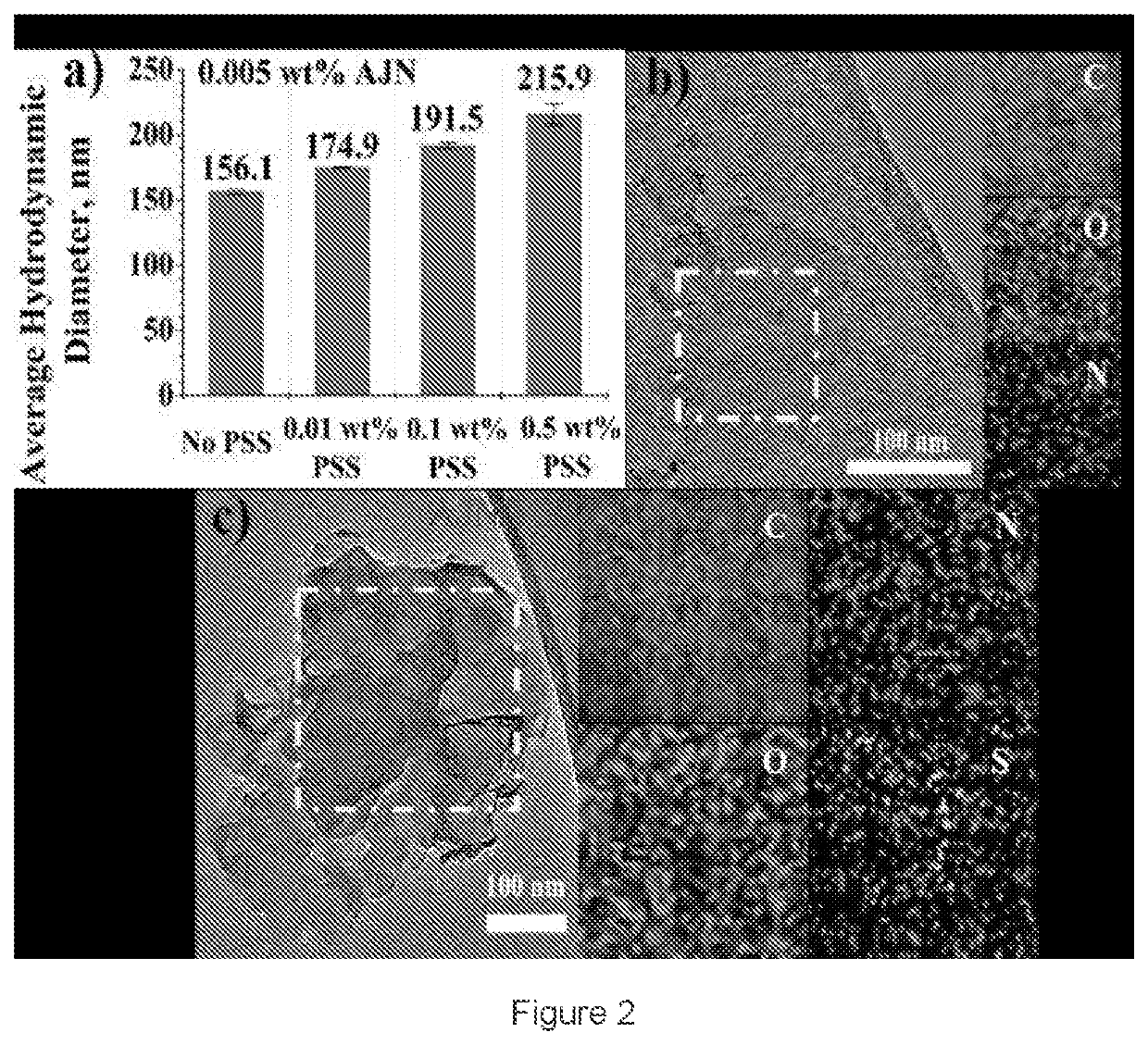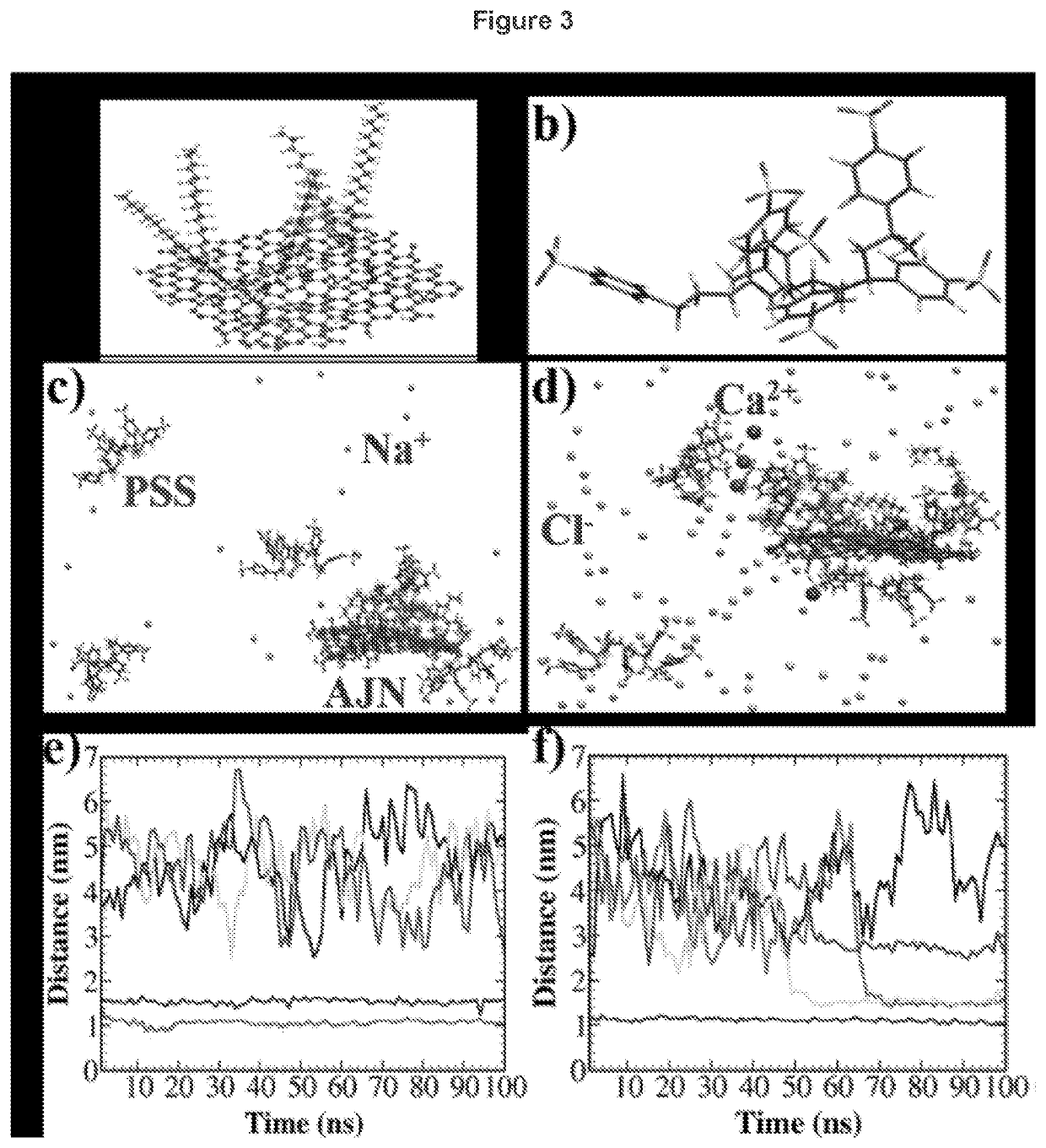A method of preparing a stable nanofluid of amphiphilic janus nanosheets in salt water
- Summary
- Abstract
- Description
- Claims
- Application Information
AI Technical Summary
Benefits of technology
Problems solved by technology
Method used
Image
Examples
example 1
Synthesis of Graphene-Based Amphiphilic Janus Nanosheets (AJNs)
[0039]In one embodiment described herein, the amphiphilic Janus nanosheets were synthesized using the wax-masking method (Hong, L.; Jiang, S.; Granick, S. Langmuir 2006, 22, 9495; Wu, H.; Yi, W. Y.; Chen, Z.; Wang, H. T.; Du, Q. G. Carbon 2015, 93, 473). Graphene oxide (GO) was first fabricated by A chemical oxidation method (Marcano, D. C.; Kosynkin, D. V.; Berlin, J. M.; Sinitskii, A.; Sun, Z. Z.; Slesarev, A.; Alemany, L. B.; Lu, W.; Tour, J. M. ACS Nano 2010). Paraffin wax (80 g) was melted at a temperature of 75° C. and then mixed with GO (200 mg) and water (300 g) and NaCl (8 g).
[0040]The mixture was vigorously stirred at 75° C. with a speed of 1800 rpm for 1 hour and then cooled down to room temperature. After extensive wash with NaOH (pH˜9), DI water and ethanol, the GO covered wax particles were dispersed in absolute alcohol solution of octadecylamine and stirred overnight. After several washes with ethanol, wax...
example 2
[0068]Graphene-based amphiphilic Janus nanosheets were synthesized by hydrophobizing one side of GO with alkylamine. In one embodiment, functionalization restores the graphitic sp2 network, which alters the surface electronic structure of GO, therefore produces physical properties that are different from those of the parent GO.
[0069]To calculate interaction energy potentials between such colloids, the surface conjugation ratio (defined as the ratio of alkylamine-functionalized sites to the total available functional sites on the GO surface) and physical properties of the material must be determined in order to develop a methodology for characterizing the colloidal behavior of the amphiphilic Janus nanomaterials and the factors that affect it. Therefore, provided herein is a method for evaluating the stability of these and other amphiphilic Janus nanomaterials, controlling self-assembly to create more complex structures, and stabilizing nanosheets for applications in extreme environm...
PUM
 Login to View More
Login to View More Abstract
Description
Claims
Application Information
 Login to View More
Login to View More - R&D
- Intellectual Property
- Life Sciences
- Materials
- Tech Scout
- Unparalleled Data Quality
- Higher Quality Content
- 60% Fewer Hallucinations
Browse by: Latest US Patents, China's latest patents, Technical Efficacy Thesaurus, Application Domain, Technology Topic, Popular Technical Reports.
© 2025 PatSnap. All rights reserved.Legal|Privacy policy|Modern Slavery Act Transparency Statement|Sitemap|About US| Contact US: help@patsnap.com



